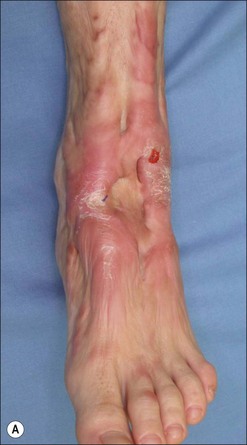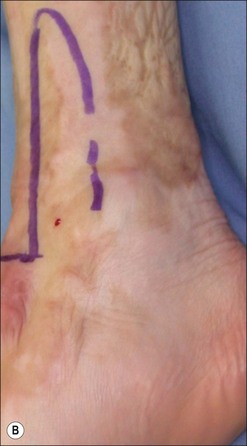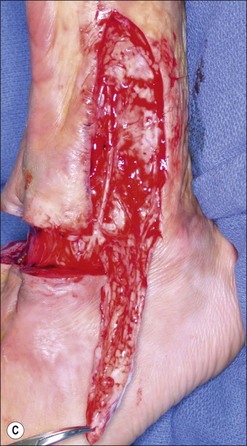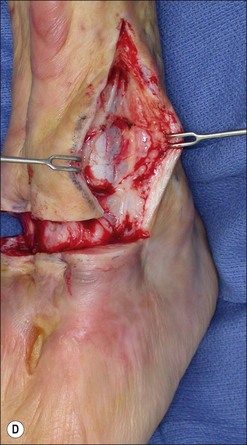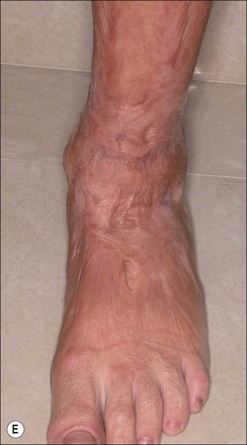Chapter 59 Reconstruction of burn deformities of the lower extremity
![]() Access the complete reference list online at http://www.expertconsult.com
Access the complete reference list online at http://www.expertconsult.com
Reconstruction of knee, ankle and foot deformities
Scar deformities involving the knee joint, dorsum of the foot and the ankle
Contractural deformities involving the toes
Reconstruction of the dorsally contracted toes
In children with recent onset of toe extension contracture, surgical manipulation of the volar plate of the MTP joint capsule is usually unnecessary. A Kirschner’s wire of 0.020–0.035 inch size is inserted through the proximal phalanx to keep the digit in full extension while maintaining the MTPJ in 45–60° plantar flexion. The wires are removed 10–14 days later, once the take of skin graft or flap is established (Fig. 59.1).
In order to minimize recurrent contracture of the toe joints commonly associated with the use of skin grafting technique, a skin flap mobilized from the area adjacent may be used, particularly in instances where the joint structure is exposed. A  z-plasty technique is useful in achieving coverage of the joint structures and the wound defect (Fig. 59.2).
z-plasty technique is useful in achieving coverage of the joint structures and the wound defect (Fig. 59.2).
Contractural deformities of the anterior ankle
Reconstruction of dorsiflexion contracture of the ankle
The technique of  paratenon cutaneous (PC) z-plasty, a variant of paratenon cutaneous z-plasty technique, is useful for instances with extensive scarring with an uninjured skin available for flap fabrication. A right-angled triangular skin flap is marked with its cathetus perpendicular to the line of scar release. The paratenon is included for flap fabrication. The flap is rotated 90° to fill the defect resulting from release (Fig. 59.3).
paratenon cutaneous (PC) z-plasty, a variant of paratenon cutaneous z-plasty technique, is useful for instances with extensive scarring with an uninjured skin available for flap fabrication. A right-angled triangular skin flap is marked with its cathetus perpendicular to the line of scar release. The paratenon is included for flap fabrication. The flap is rotated 90° to fill the defect resulting from release (Fig. 59.3).
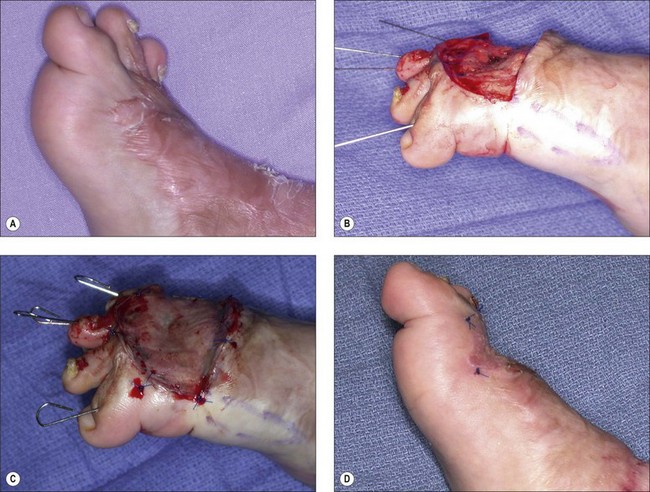
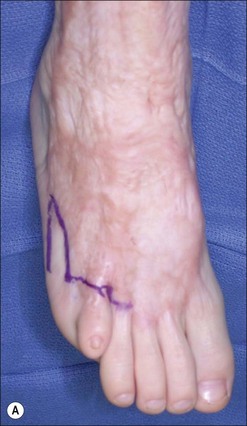

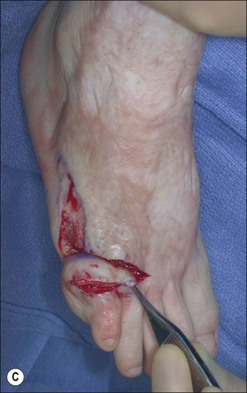
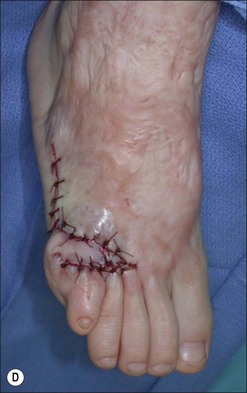
 paratenon cutaneous (PC) z-plasty.
paratenon cutaneous (PC) z-plasty.